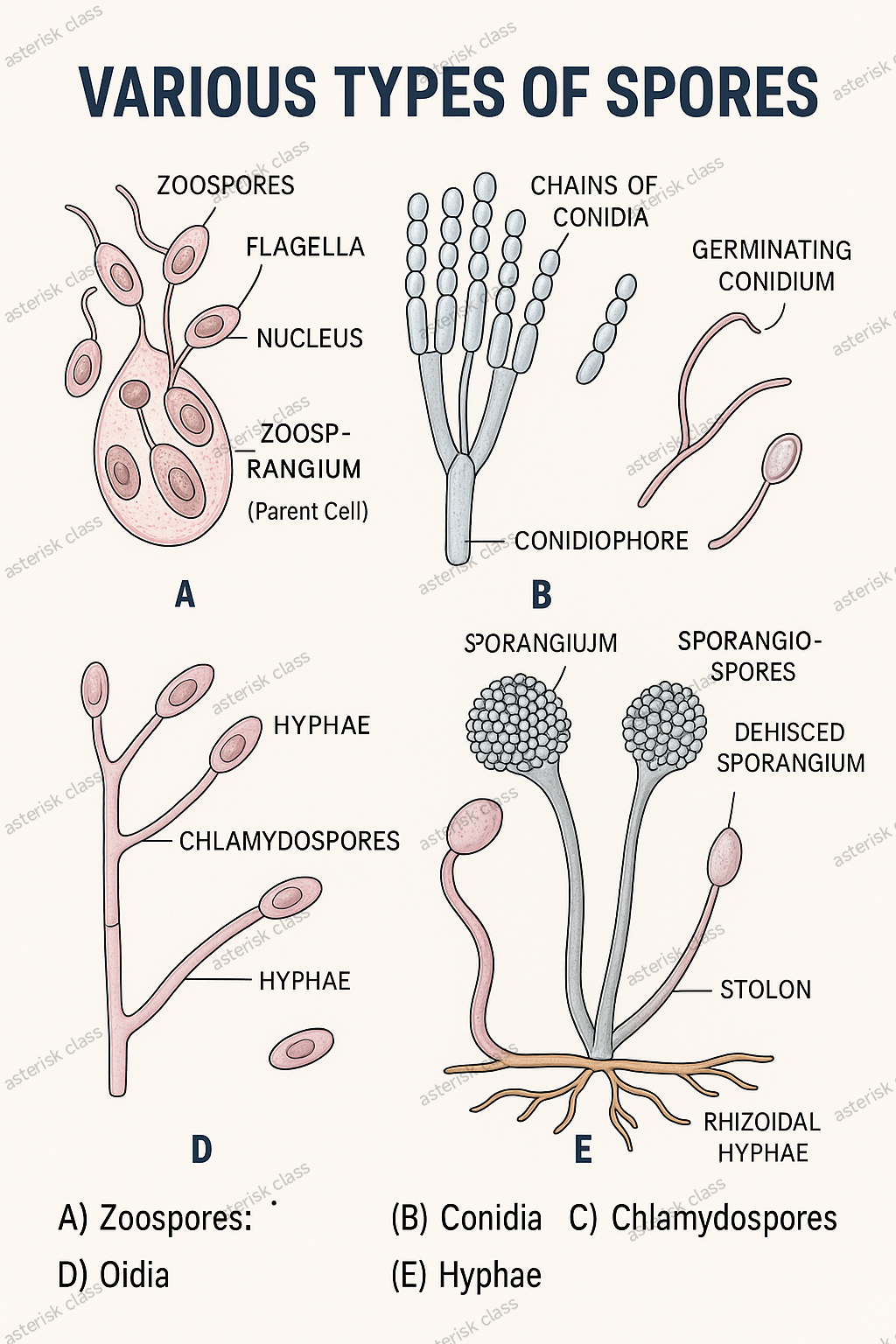Mycology Made Easy
Understanding Fungal Spore Reproduction
Types of Fungal Spores
Fungi reproduce through sexual and asexual spores, each with unique structures and functions. Below is a breakdown of major spore types:
Sexual Spores (Meiosis)
Oospores
Group: Oomycetes (e.g., Phytophthora)
Thick-walled spores formed in an oogonium after fertilization.
Fun Fact: Cause diseases like potato blight!
Zygospores
Group: Zygomycetes (e.g., Rhizopus)
Formed by fusion of gametangia; resistant to harsh conditions.
Ascospores
Group: Ascomycetes (e.g., Penicillium)
Produced in sac-like asci (typically 8 spores per ascus).
Basidiospores
Group: Basidiomycetes (e.g., mushrooms)
Formed on basidia; often 4 spores per basidium.
Asexual Spores (Mitosis)
Conidiospores (Conidia)
Group: Ascomycetes
Formed on conidiophores. Types include microconidia and macroconidia.
Sporangiospores
Group: Zygomycetes
Produced inside sporangia on sporangiophores.
Chlamydospores
Group: Many fungi
Thick-walled survival spores formed from hyphae.
Oidia (Arthrospores)
Group: Some yeasts/molds
Formed by hyphal fragmentation.
Hyphae & Related Structures
- Hyphae: Thread-like filaments forming the fungal body (septate or aseptate).
- Mycelium: Mass of hyphae.
- Haustoria: Specialized hyphae for nutrient absorption in parasites.
Summary Table
| Spore Type | Fungal Group | Formation | Function |
|---|---|---|---|
| Oospore | Oomycetes | Sexual | Survival |
| Conidiospore | Ascomycetes | Asexual | Rapid spread |
| Zygospore | Zygomycetes | Sexual | Dormancy |
| Ascospore | Ascomycetes | Sexual | Dispersal |
| Basidiospore | Basidiomycetes | Sexual | Dispersal |
